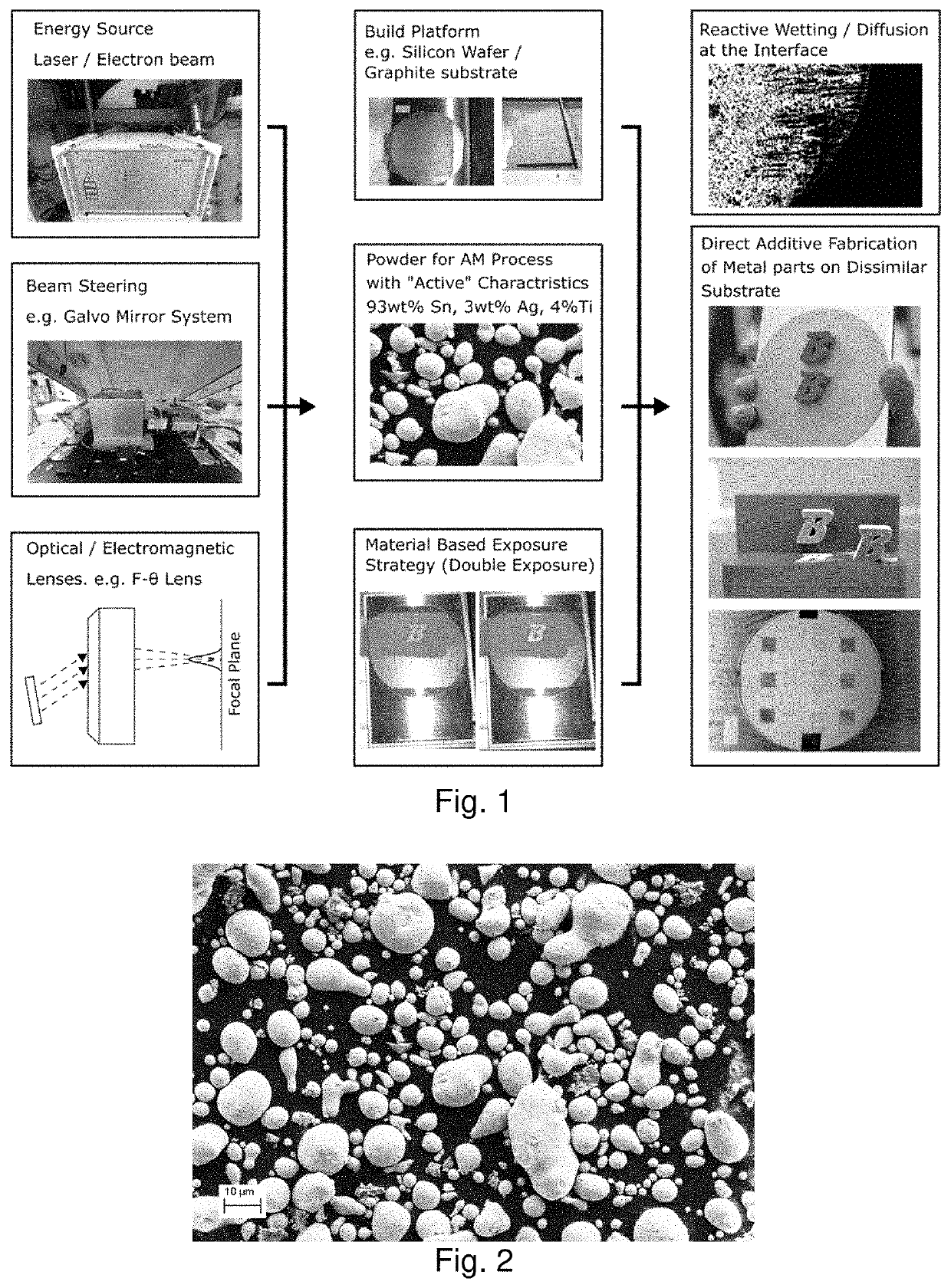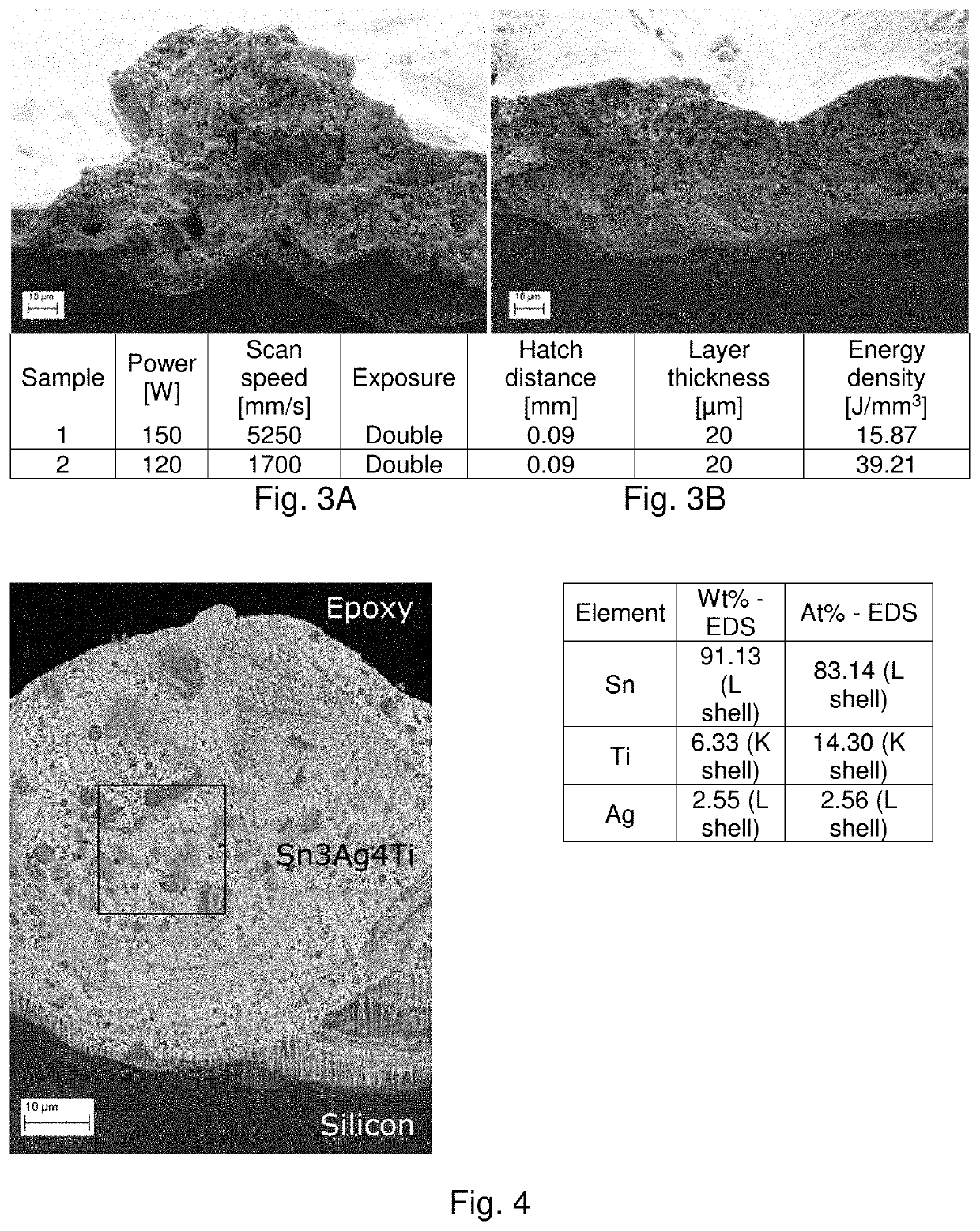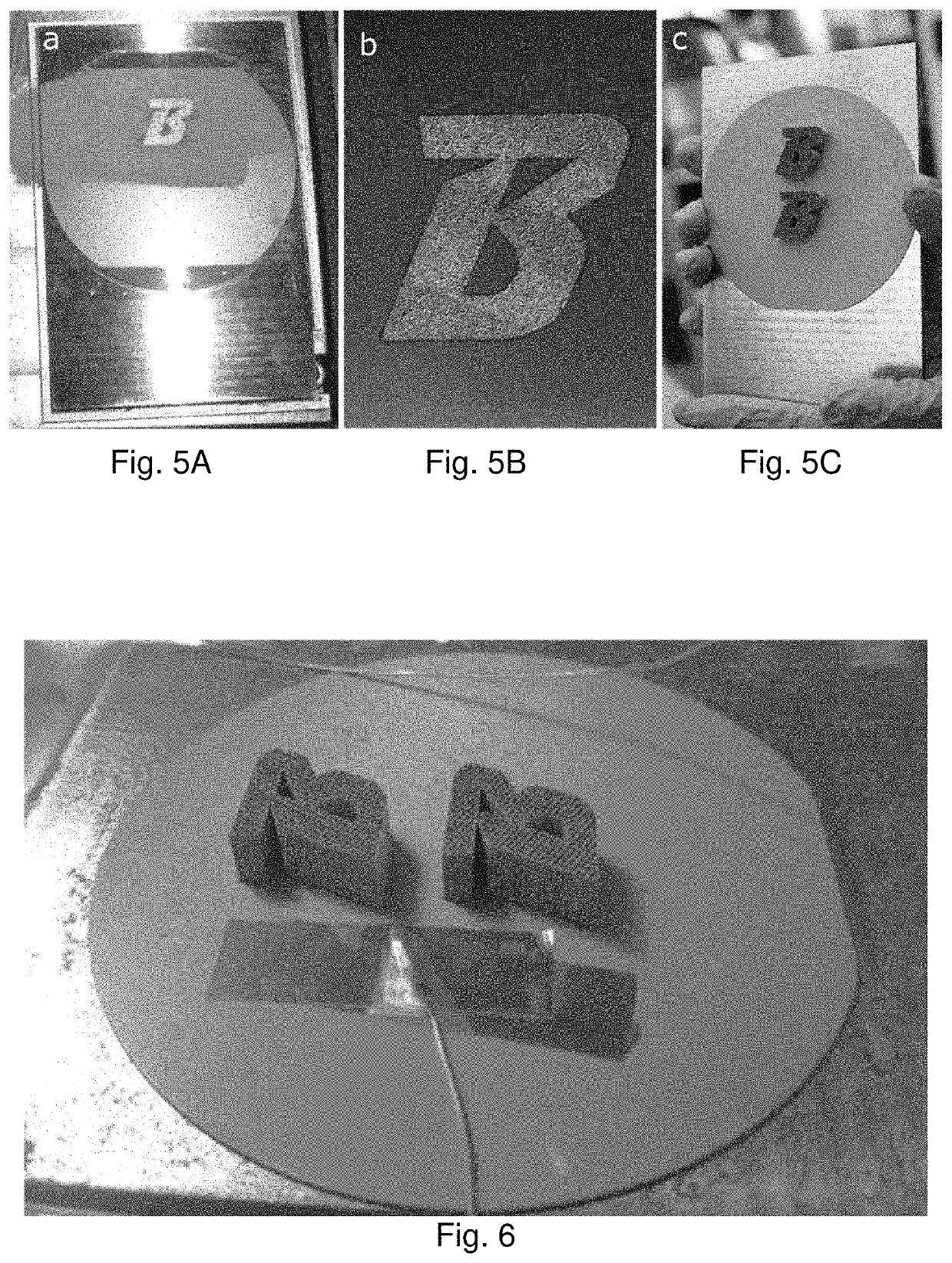Additive manufacturing processes and additively manufactured products
a technology of additive manufacturing and manufacturing process, applied in the direction of manufacturing tools, semiconductor/solid-state device details, lighting and heating apparatus, etc., can solve the problems of device failure, interconnection breakage, and inability to directly integrate these novel additive manufacturing devices directly onto electronic devices
- Summary
- Abstract
- Description
- Claims
- Application Information
AI Technical Summary
Benefits of technology
Problems solved by technology
Method used
Image
Examples
example 1
[0172]Metal powder may be deposited in fused layers a non-metal substrate by directed-energy powder fusion manufacturing. The energy source for this process can be from any focused energy sources, and popular sources include laser and electron beams. The powder can be deposited uniformly over an entire layer and then selectively melted, as is done in powder bed fusion processes, or it can be made with powder that is directly deposited onto the area of the part that is being exposed to the focused energy source, in the process typically referred to as directed energy deposition. The directed energy source may be steered or the sample stage may move the sample to selectively fuse powder where desired. This process is conducted in an inert environment, such as an Argon, N2, or vacuum environment to reduce oxidation risk.
[0173]A prototype of the technology employs a laser-powder bed fusion EOS M290 machine that possesses a 500 W peak 1064 nm Yb-fiber laser and high speed galvanometer mi...
example 2
[0238]The present technology provides an alternate technique for direct fabrication of heat transfer devices onto the chip by additive manufacturing, by building on recent hybrid bonding literature for interconnect manufacturing [98-101]. Previously lead solders, and more recently non-lead solders, have been used extensively in the electronic packaging industry to form interconnects, etc. However, reliability concerns are pushing the industry to move away from solders, towards a concept called hybrid bonding [94-97] which does not require solders. Hybrid bonding consists of multi-stage physical and chemical depositions onto a semiconductor device by employing photolithography-based techniques. This process produces a thin bonding layer via depositions that can then have features, like fins and microchannels, additively deposited via a powder-based laser melting process.
[0239]In this example, ˜50 nm of titanium is deposited onto the back of the semiconductor die by physical vapor dep...
PUM
| Property | Measurement | Unit |
|---|---|---|
| temperatures | aaaaa | aaaaa |
| temperatures | aaaaa | aaaaa |
| temperatures | aaaaa | aaaaa |
Abstract
Description
Claims
Application Information
 Login to View More
Login to View More - R&D
- Intellectual Property
- Life Sciences
- Materials
- Tech Scout
- Unparalleled Data Quality
- Higher Quality Content
- 60% Fewer Hallucinations
Browse by: Latest US Patents, China's latest patents, Technical Efficacy Thesaurus, Application Domain, Technology Topic, Popular Technical Reports.
© 2025 PatSnap. All rights reserved.Legal|Privacy policy|Modern Slavery Act Transparency Statement|Sitemap|About US| Contact US: help@patsnap.com



